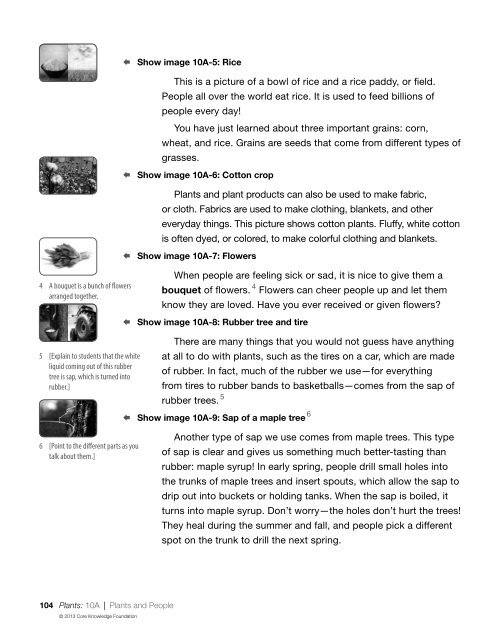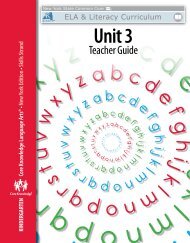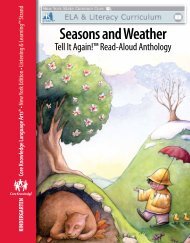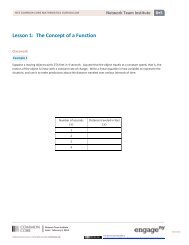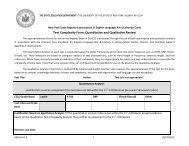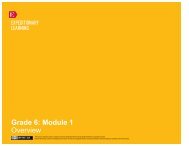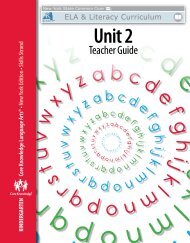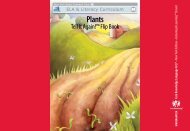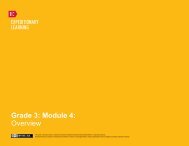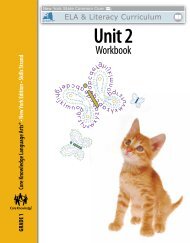Plants - EngageNY
Plants - EngageNY
Plants - EngageNY
Create successful ePaper yourself
Turn your PDF publications into a flip-book with our unique Google optimized e-Paper software.
Show image 10A-5: Rice<br />
This is a picture of a bowl of rice and a rice paddy, or field.<br />
People all over the world eat rice. It is used to feed billions of<br />
people every day!<br />
You have just learned about three important grains: corn,<br />
wheat, and rice. Grains are seeds that come from different types of<br />
grasses.<br />
Show image 10A-6: Cotton crop<br />
<strong>Plants</strong> and plant products can also be used to make fabric,<br />
or cloth. Fabrics are used to make clothing, blankets, and other<br />
everyday things. This picture shows cotton plants. Fluffy, white cotton<br />
is often dyed, or colored, to make colorful clothing and blankets.<br />
Show image 10A-7: Flowers<br />
4 A bouquet is a bunch of flowers<br />
arranged together.<br />
When people are feeling sick or sad, it is nice to give them a<br />
bouquet of flowers. 4 Flowers can cheer people up and let them<br />
know they are loved. Have you ever received or given flowers?<br />
5 [Explain to students that the white<br />
liquid coming out of this rubber<br />
tree is sap, which is turned into<br />
rubber.]<br />
Show image 10A-8: Rubber tree and tire<br />
There are many things that you would not guess have anything<br />
at all to do with plants, such as the tires on a car, which are made<br />
of rubber. In fact, much of the rubber we use—for everything<br />
from tires to rubber bands to basketballs—comes from the sap of<br />
rubber trees. 5<br />
Show image 10A-9: Sap of a maple tree 6<br />
6 [Point to the different parts as you<br />
talk about them.]<br />
Another type of sap we use comes from maple trees. This type<br />
of sap is clear and gives us something much better-tasting than<br />
rubber: maple syrup! In early spring, people drill small holes into<br />
the trunks of maple trees and insert spouts, which allow the sap to<br />
drip out into buckets or holding tanks. When the sap is boiled, it<br />
turns into maple syrup. Don’t worry—the holes don’t hurt the trees!<br />
They heal during the summer and fall, and people pick a different<br />
spot on the trunk to drill the next spring.<br />
104 <strong>Plants</strong>: 10A | <strong>Plants</strong> and People<br />
© 2013 Core Knowledge Foundation


